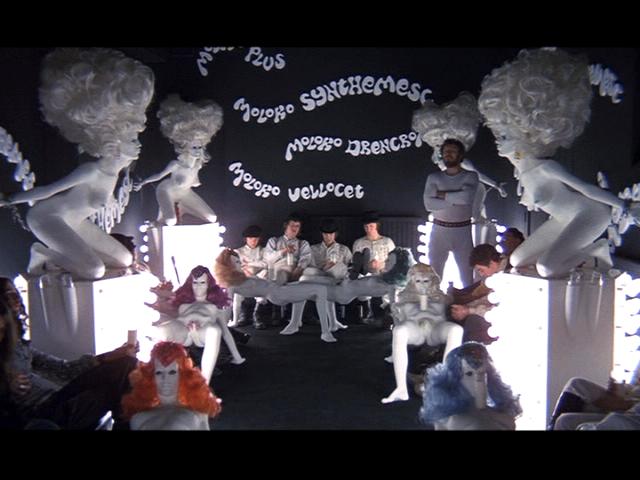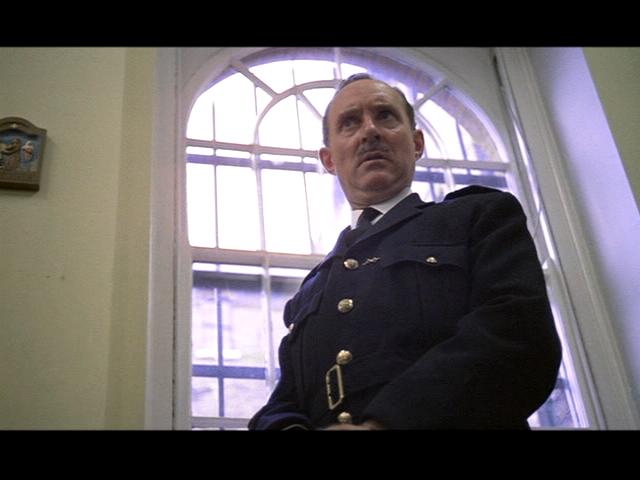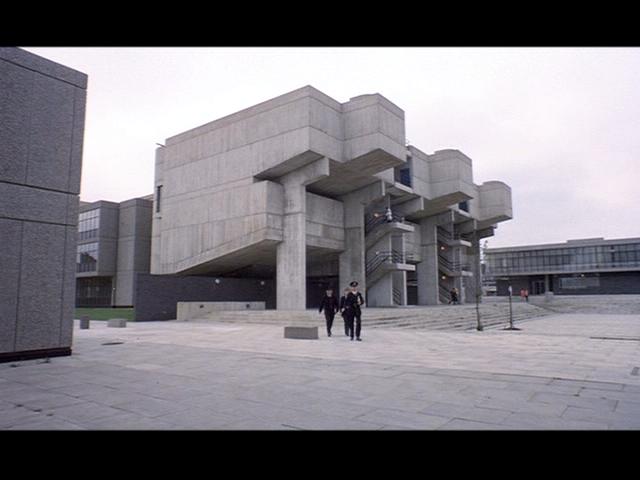Part 2
A Clockwork Orange (1971)
The elimination of privacy in Stanley Kubrick's A Clockwork Orange (1971) is less spatial than psychological; the main character Alex has his ability to make decisions tampered with by the authorities in the name of the good of the general public. While his personal space is not physically violated by the authorities, his ability to enjoy this space is essentially eliminated by the removal of his ability to fight back when challenged: he is driven out of his home by his own parents, out of his favorite haunts by his friends, and out of the 'private' spaces in the city (such as under a bridge where the homeless gather) by his former victims. The contrast in architectural spaces in this film is not nearly as blatant as the previous two films, likely because it was shot more on location than they were. Nonetheless, there is a distinct contrast between the architecture of authority - the prison and the treatment facility - and the architecture of the private realm - the nightclub and Alex's home.
The prison, unsurprisingly, is cold and rigid in its architecture - there is much repetition in the overall geometry and the spaces inside limit the ability of the prisoners to interact by removing the variation and human scaled spaces which support personal connections. This is not shocking because the audience expects this of a prison - it is intended to limit the privacy of the prisoners and facilitate their control in the name of the order of the group within the prison. What is more interesting is the architecture of the 'treatment' facility - a cold, brutalist building with expansive public spaces which discourage loitering and the possibility of incidental contact between people. This style of building was wildly popular for educational and medical facilities around the time this film was made, though it has since fallen into disfavour for the very reasons stated above. The architecture of the private realm is, as in the previous two films discussed, better scaled for human occupation with more texture and variation and more places to pause, linger and interact with other people.
In much the same way as in Equilibrium (2002) and Brazil (1985) there is direct reference to fascist or authoritarian regimes; the man in charge of Alex while he is in prison bears an uncanny resemblance to Hitler and, later, during his 'treatment,' Alex (and the audience) is shown Nazi propaganda films. Interestingly, it is not the Hilter-like character who meddles with his mind, the most heinous violation of Alex's privacy. The chief of guards is in fact a comical character with a very limited ability to intimidate. The most serious violation is perpetrated by men and women wearing white coats who purport to be healing Alex. This shift from direct condemnation of historical fascism suggests that the director is commenting on the possibility of an atrocity worse than the fascism of the mid 20th century which could be perpetrated by the emerging British authorities of his time (the 1970s).
While the attempts in this fictional world to eliminate antagonism are more experimental and specific to individuals violating laws the audience would find reasonable, the director hints at a wider application which would, as in the previous two films, constitute an egregious violation of the principles of freedom and democracy. When the freedom of choice, that is to say the ability for the individual to be unsocial as well as social, is removed the ability for law-governed order to emerge in society is also eliminated - exactly as Kant posited.
 |
 |
 |
Decadent Underworld |
Hitler-like Chief of Guards |
Brutalist 'Treatment' Facility |